KeyCloak
Add authentication to applications and secure services with minimum fuss.
- User Federation
- Identity Brokering
- Social Login
A realm in Keycloak is the equivalent of a tenant. It allows creating isolated groups of applications and users. By default there is a a single realm in Keycloak called master. This is dedicated to manage Keycloak and should not be used for your own applications.
Features
- Single sign-on and single sign-out
- Standard protocols - OAuth 2.0, OIDC 1.0, SAML 2.0
- Flexible Authentication and Authorization
- Multi-Factor Authentication - One-time Passwords
- Social Login - Google, Facebook, Twitter,...
- Provides centralized User Management
- Supports Directory Services
- Customizable and Extensible
- Easy setup and integration
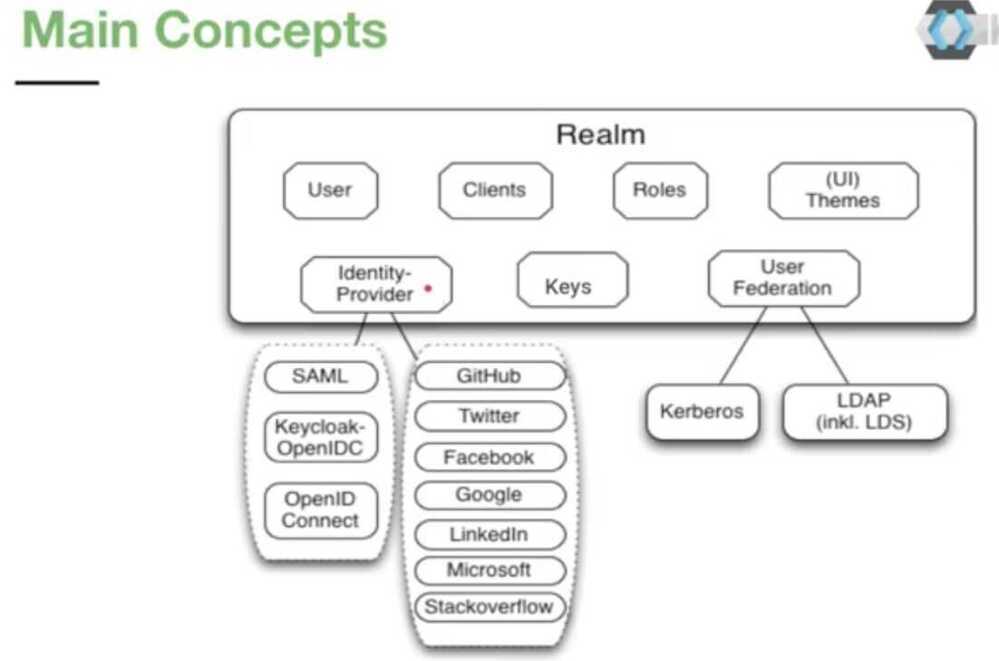
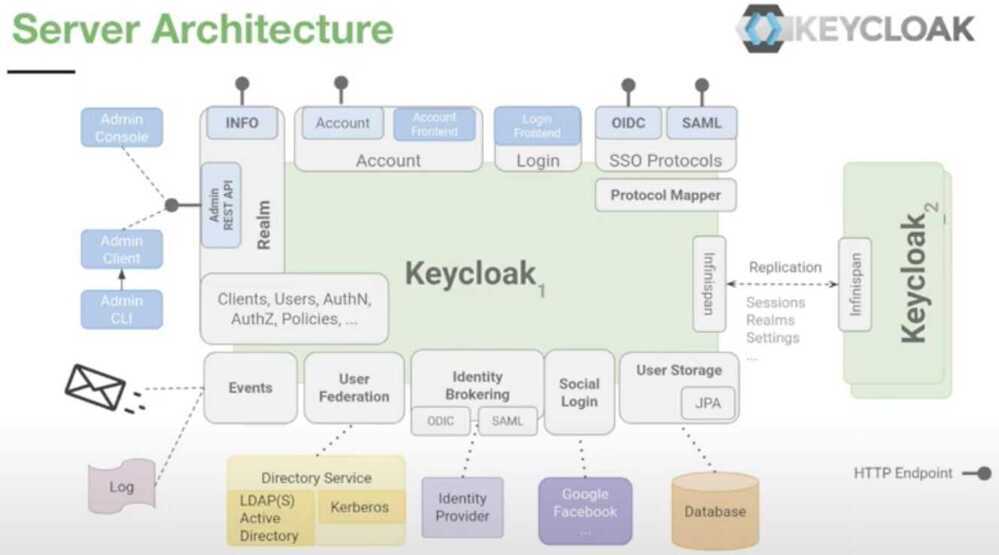
Single sign-on
- SSO - Login once to access all applications
- Standardized Protocols
- OpenID Connect 1.0 (OIDC)
- Security Assertion Markup Language 2.0 (SAML)
- Browser based Web SSO
- Web, Mobile and Desktop Apps
- Support for single logout
- Logouts can be propagated to applications
- Applications can opt-in
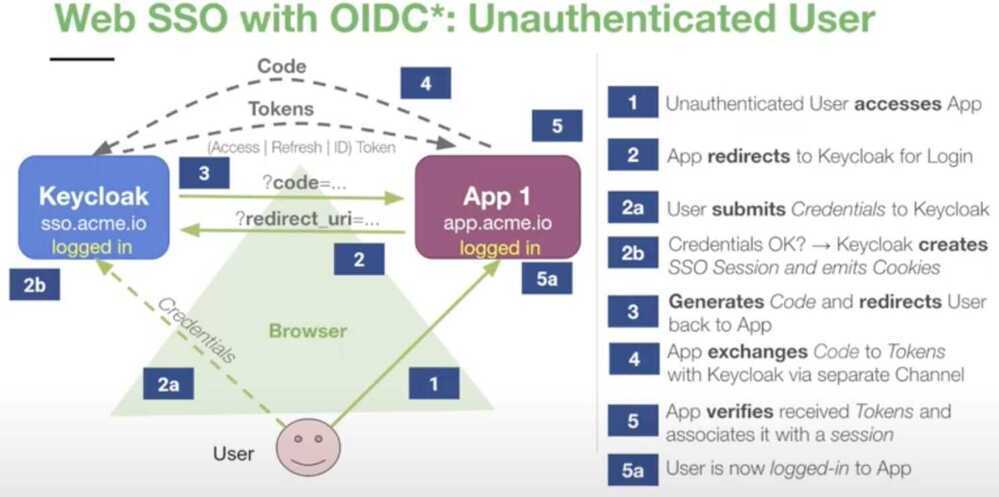
Keycloak Tokens
- OAuth / OpenID Connect
- Signed self-contained JSON Web Token
- Claims: KV-Pairs with user information + Metadata
- Issued by Keycloak, signed with Realm Private Key
- Verified with Realm Public Key
- Limited lifespan, can be revoked
- Essential Token Types
- Access-Token short-lived (Minutes+) -> used for accessing Resources
- Refresh-Token longer-lived (Hours+) -> used for requesting new Tokens
- IDToken -> contains User information (OIDC)
- Offline-Token long-lived (Days++) "Refresh-Token" that "never" expires
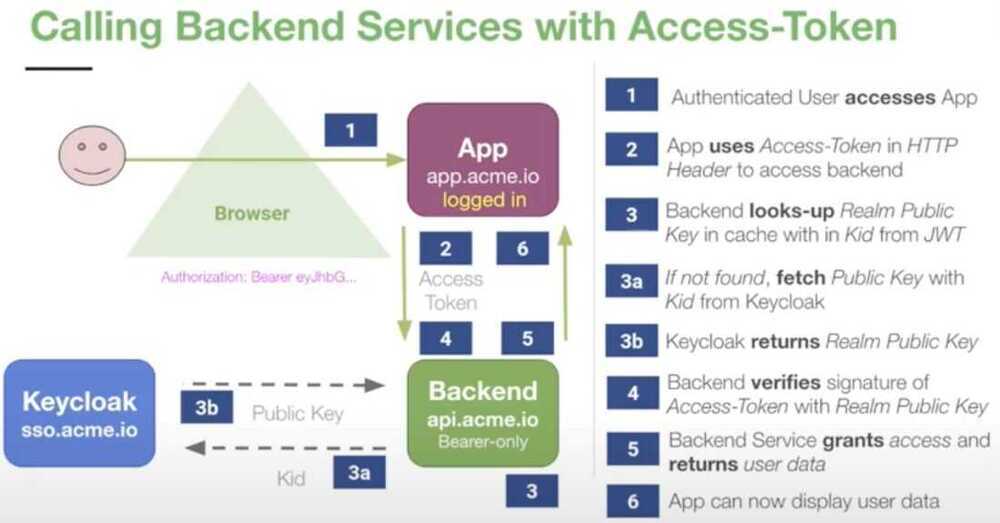
Keycloak Integration Options
- OpenID Connect Keycloak Adapters
- Spring security, Spring boot, ServletFilter, Tomcat, Jetty, Undertow, Wildfly, JBoss, EAP,...
- NodeJS, JavaScript, Angular, AngularJS, Aurelia, CLI & Desktop Apps...
- SAML Keycloak Adapters
- ServletFilter, Tomcat, Jetty, Wildfly...
- Reverse Proxies
- Keycloak Gatekeeper, dedicated Proxy, written in Go, injects auth info into HTTP headers
- Apache mod_auth_oidc for OpenID connect
- Apache mod_auth_mellon for SAML
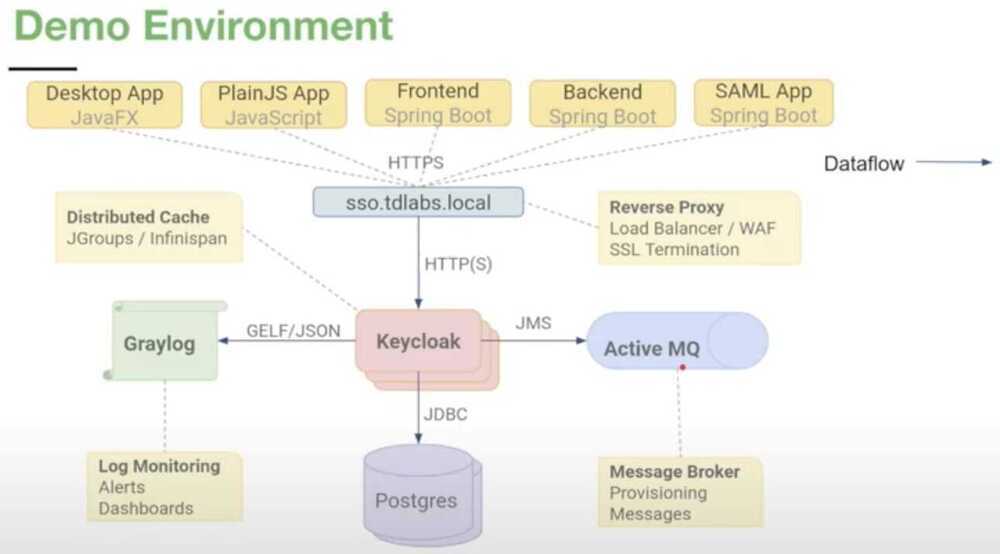
Python - https://github.com/marcospereirampj/python-keycloak
https://github.com/chunky-monkeys/keycloak-client
Django integration - https://medium.com/@sairamkrish/keycloak-integration-part-3-integration-with-python-django-backend-5dac3b4a8e4e
https://github.com/keycloak/keycloak
https://github.com/keycloak/keycloak-quickstarts
https://github.com/thomasdarimont/keycloak-extension-playground
https://www.keycloak.org/docs/latest/getting_started
https://www.keycloak.org/docs/latest/authorization_services
https://stackoverflow.com/questions/42186537/resources-scopes-permissions-and-policies-in-keycloak
How to secure your Microservices with Keycloak - Thomas Darimont
Bilding an effective identity and access management architecture with Keycloak